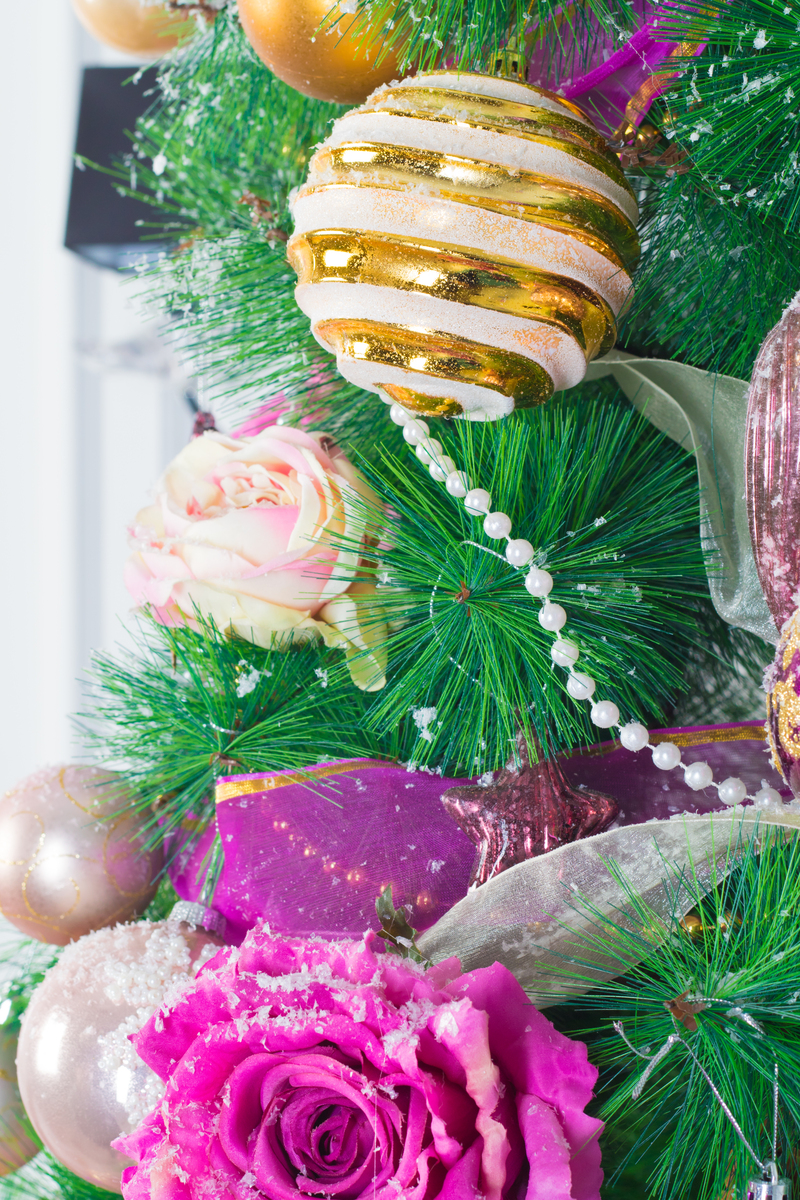Hydrangea Care: Achieve Flourishing Blossoms
Posted on 25/08/2025
Hydrangea Care: Achieve Flourishing Blossoms
Hydrangeas are beloved among gardeners for their eye-catching blooms and lush greenery. Whether you are an experienced horticulturist or a newcomer to gardening, mastering hydrangea care is essential for nurturing flourishing blossoms season after season. In this comprehensive guide, we will explore all aspects of hydrangea maintenance, including watering, soil, fertilization, pruning, and tips to ensure your hydrangea shrubs bloom brilliantly.
Understanding the Hydrangea: Types and Characteristics
Before delving into hydrangea plant care, it's important to know the distinct types of hydrangeas commonly cultivated in gardens:
- Hydrangea macrophylla - Bigleaf hydrangeas, including mophead and lacecap varieties. Known for their large, rounded blossoms and ability to change color based on soil pH.
- Hydrangea paniculata - Panicle hydrangeas, famous for their cone-shaped white blossoms that mature to pinkish hues.
- Hydrangea quercifolia - Oakleaf hydrangeas, identifiable by their lobed foliage and white panicles.
- Hydrangea arborescens - Smooth hydrangeas, such as the classic 'Annabelle' type, produce round white flower heads.
- Hydrangea serrata - Mountain hydrangeas, similar to bigleaf hydrangeas but hardier and smaller in size.
Each species has its own preferences regarding light, soil, and pruning, so recognizing your hydrangea type is crucial for optimal hydrangea bloom care.

Choosing the Ideal Location for Hydrangeas
Location plays a vital part in achieving lush and vibrant hydrangea blooms. For most hydrangea varieties, ensure you provide the following:
- Partial Sun: Hydrangeas thrive in locations that receive morning sun and afternoon shade. Overexposure to harsh sunlight, especially in warmer climates, can cause wilting and scorching of leaves.
- Shelter from Harsh Winds: Position hydrangeas away from open, windy areas to prevent blossom and leaf damage.
- Well-Draining Soil: Though hydrangeas require moist soils, excessive waterlogging leads to root rot.
Tip: Observe your garden throughout the day to choose a site that balances sunlight and shade for robust hydrangea plant growth.
Soil Preparation: The Foundation of Hydrangea Health
Hydrangeas perform best in rich, loamy, and well-drained soil. Preparing and amending your soil not only supports healthy roots but also impacts flower color in certain species. Here's how to optimize soil for your hydrangeas:
- pH Matters: Bigleaf hydrangeas can display blue, pink, or purple hues depending on soil acidity. Acidic soil (pH below 6) encourages blue blossoms, while alkaline soil (pH above 7) results in pink flowers.
- Enhance Organic Matter: Mix compost, well-rotted manure, or peat moss before planting to enrich the soil structure and boost nutrient content.
- Drainage: If soil is clay-heavy, add sand or organic materials to improve drainage and prevent root rot--a frequent hydrangea issue.
Testing and Amending Soil pH
- Use a soil test kit to determine your garden's pH level.
- For bluer hydrangea flowers: incorporate aluminum sulfate or elemental sulfur.
- For pink hydrangea flowers: add garden lime to raise the soil pH.
Watering Hydrangeas: Moisture for Maximum Blooms
Understanding the water needs of hydrangeas is paramount for healthy, flourishing blossoms. People often ask, "How often should I water my hydrangeas?" The answer varies by climate and soil, but these tips serve as general guidelines:
- Consistent Moisture: Keep soil evenly moist, not soggy. Hydrangeas are not drought-tolerant and can wilt quickly if allowed to dry out.
- Water Deeply: Rather than shallow, frequent watering, irrigate deeply 1-3 times per week, especially during hot or dry periods.
- Morning Watering: Water in the morning to ensure plants dry by evening, reducing disease risk.
Mulching for Water Retention
Applying a 2-3 inch layer of mulch around your hydrangeas (while avoiding direct contact with stems) helps:
- Retain soil moisture
- Suppress weeds
- Regulate soil temperature
Preferred mulch materials include shredded bark, pine needles, and compost.
Feeding Hydrangeas: Fertilization for Vigorous Growth
Nutrients are crucial for hydrangea plant health and blooming success. Here are expert tips on fertilizing hydrangeas:
- Spring Feeding: Apply a balanced, slow-release fertilizer (such as 10-10-10 NPK) in early spring as new growth emerges.
- Avoid Over-Fertilization: Too much nitrogen promotes leafy growth at the expense of blossoms. Always follow label directions and err on the side of underfeeding.
- Special Formulations: Some hydrangea fertilizers contain elements to enhance flower color--choose accordingly.
Note: *Mountain hydrangeas (Hydrangea serrata) and bigleaf hydrangeas (Hydrangea macrophylla) benefit most from regular light feeding, while panicle hydrangeas require less fertilization.*
Pruning Hydrangeas: Timing Is Everything
Pruning practices dramatically influence your hydrangea's blooming potential. Prune at the wrong time, and you might cut away next season's flowers. Here's your guide:
Pruning Guidelines by Hydrangea Type
-
Bigleaf & Mountain Hydrangeas (H. macrophylla & H. serrata):
- These bloom on old wood (last year's growth).
- Prune immediately after flowering--never in fall or spring.
- Remove spent blooms and weak stems to shape the plant.
-
Panicle & Smooth Hydrangeas (H. paniculata & H. arborescens):
- These flower on new wood (current season's growth).
- Prune in late winter or early spring before new growth begins.
- Cut back stems by about one-third or to desired shape.
-
Oakleaf Hydrangeas (H. quercifolia):
- Bloom primarily on old wood.
- Prune just after flowering, lightly shaping and removing dead wood.
Regular deadheading throughout the season keeps hydrangeas tidy and may encourage rebloom in some varieties.
Protecting Hydrangeas from Pests and Diseases
Common threats to healthy hydrangea blossoms include pests, fungal diseases, and environmental stress. Stay vigilant and proactive:
- Aphids & Spider Mites: Blast off minor infestations with water, or use insecticidal soap for larger problems.
- Slugs & Snails: Use organic slug pellets or manual removal to prevent chewed foliage and flowers.
- Powdery Mildew & Leaf Spots: These are encouraged by overcrowding and excess moisture on leaves. Ensure good air circulation and avoid wetting foliage when watering.
- Root Rot: Avoid overwatering and ensure proper drainage, especially in heavy soils.
If issues persist, consult your local nursery for appropriate organic or chemical controls. Healthy, well-tended hydrangeas resist problems far better than stressed plants.
Winter Protection for Hydrangeas
Some hydrangea types are susceptible to winter damage, particularly in colder climates where frost can kill flower buds.
- Mulch Heavily: In autumn, add an extra thick layer of mulch (up to 12 inches) around the base to insulate roots.
- Cover Flower Buds: For bigleaf and mountain hydrangeas, protect forming buds with burlap, straw, or leaf litter if late spring frosts threaten.
- Container Hydrangeas: Move potted hydrangeas into a sheltered, frost-free space or insulate pots with bubble wrap and mulch.
With proper protection, your hydrangeas will return in spring ready to wow you with abundant flowers.
Encouraging Abundant and Vibrant Hydrangea Blooms
Secrets to Boosting Hydrangea Flower Production
- Plant in Groups: Hydrangeas look their best in clusters. This also encourages better humidity and microclimate control.
- Stay Consistent: Routine care, including steady watering, mulch replenishment, and light feedings, support maximum floral production.
- Monitor and Adjust: If your hydrangea fails to bloom, check: Was it pruned at the wrong time? Is it getting too much or too little sun? Is winter damage an issue?
- Experiment with Soil: With bigleaf hydrangeas, have fun adjusting pH to achieve your favorite hydrangea blossom colors.
For show-stopping hydrangea blooms, patience is key. Some shrubs take a year or two to establish before producing their best flowers--but with consistent hydrangea maintenance, you're sure to be rewarded.

Frequently Asked Questions About Hydrangea Care
How do I keep hydrangea flowers from wilting?
Maintain even soil moisture and avoid drought stress. During hot spells, shade your plants and increase mulching around the base.
Why is my hydrangea not blooming?
Common causes include improper pruning (removing flower buds), lack of sunlight, winter damage to buds, or excess nitrogen fertilizer resulting in leafy growth but few flowers.
Can I grow hydrangeas in containers?
Absolutely! Use a large container with drainage holes and fill it with rich, well-draining soil. Water more frequently than in-ground plants, and fertilize lightly. Container hydrangeas may require winter protection in colder zones.
Do hydrangeas attract pollinators?
Hydrangeas, especially lacecap and panicle types, attract bees, butterflies, and other beneficial insects, supporting your garden's ecosystem.
Conclusion: The Joy of Flourishing Hydrangea Blossoms
With a little knowledge and regular attention, anyone can enjoy flourishing hydrangea blooms year after year. Remember to:
- Match the right hydrangea variety to your climate and space
- Choose a location offering partial sun and protection from wind
- Prepare rich, loamy soil and monitor pH for desired flower colors
- Water consistently and deeply, using mulch for moisture retention
- Fertilize sparingly, tailored to your hydrangea type
- Prune at the correct time to avoid removing next year's buds
- Protect your plants from pests, diseases, and harsh winter weather
With these hydrangea care tips in your gardening toolkit, your hydrangeas will reward you with stunning floral displays and vibrant garden life each season. Happy growing!
Latest Posts
Peony Flowers and Their Colors: A Symbolic Journey
Intriguing tulip tales: 7 facts you didn't expect
Transform your cut flowers into long-lasting beauty






